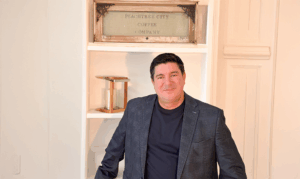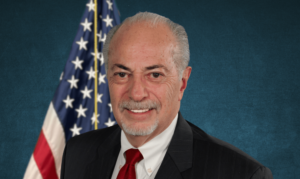Sept. 11, 2001 is my generation’s day that will live in infamy.
Four aircraft under the control of 19 terrorist hijackers would reshape our view of the world and our own sense of national security.
It was a day full of fear and sorrow, but it was also a day of great courage and national unity.
I know that I changed after September 2001. I was supposed to be on a flight at Boston’s Logan International Airport just hours after the hijacked planes from Boston took off.
A couple of days before, I was walking into the terminal at Logan and remarked to a fellow passenger how poor the security appeared. Emergency doors were propped open and security people were not paying a lot of attention.
It was primary election day in New York City. The most troubling problem New Yorkers are anticipating all day is waiting in lines at the polls. However, shortly after the polls open, terrorist hijackers board American Airlines Flight 11 at 7:59 a.m. Another 17 hijackers are proceeding to planes at Logan, Newark and Washington Dulles. Two of the hijackers are tagged as suspicious at the gate, but are allowed to board.
At 8:14 a.m., United Airlines Flight 175 takes off.
At 8:20 a.m., American Airlines Flight 77 departs.
At 8:42 a.m., United Airlines Flight 93 is airborne.
The entire horrific series of events with all four aircraft transpires in just 102 minutes.
Flight 11 rams into the World Trade Center’s North Tower at 8:46 a.m. People in the World Trade Center’s South Tower are advised to remain in the building. By 9:02 a.m., the South Tower evacuation begins.
Terrorist hijackers crash United Airlines Flight 175 into the World Trade Center’s South Tower at 9:03 a.m. Two minutes later, President Bush is again interrupted by his White House Chief of Staff Andy Card and told that a second plane crashed into the World Trade Center and that the country is under attack.
People in the World Trade Center trapped by the fire at the higher floors dangle out windows desperately trying keep from being burned alive. Then, out of sheer desperation, they begin to jump.
The sight of people free-falling the length of the super tall structures sears into my mind. Some of the people jumping land on others on the ground, killing them instantly.
Some victims call love ones and leave messages on voice mails knowing they will not survive.
By 9:37 a.m., terrorist hijackers crash American Airlines Flight 77 into the western facade of the Pentagon. Five minutes later, the FAA grounds all flights over or bound for the continental United States.
Radio traffic among first responders in New York is horrible because protocols that distinguished each department was hampered by the lack of inter-operability, damaged or failed network infrastructure during the attack, and they overwhelmed by simultaneous communication between superiors and subordinates.
By 9:45 a.m., the White House and the U.S. Capitol are evacuated.
At 9:57 a.m., passengers on United Airlines Flight 93 begin notifying family that their plane has been hijacked. Two minutes later, burning for 56 minutes, the South Tower collapses. The building falls completely to the ground in just 10 seconds. Approximately 600 workers and first responders die.
Emergency vehicles are crushed and people are engulfed in a ferocious cloud of ash dust and debris. People emerge from the cloud choking, looking like ghosts covered in white.
Knowing their fate, at 10:03 a.m., the passengers try to overpower the hijackers, with passenger Todd Beamer giving his last words over the telephone: “Let’s roll.” To prevent the passengers from taking control of the plane, the hijackers crash United Airlines Flight 93 in a field in Pennsylvania. The aircraft crashes just 20 minutes from reaching Washington D.C.
By 10:15 a.m., the Pentagon offices referred to as the “E Ring” collapse. Thirteen minutes later, burning for 102 minutes, the North Tower collapses, killing approximately 1,400.
The North Tower collapse includes the “Miracle of Stairwell B” where 13 first responders and one civilian literally had the entire building fall on top of them only to look up and see the sky. FDNY Lt. Mickey Kross of Engine 16 said, “A 110-story building fell on us and I’m looking up at the sun.”
Mayor Rudolph Giuliani orders the evacuation of lower Manhattan at 11:02 a.m. All modes of transportation are down.
Some head to the water and climb on whatever boat they could find.
Desperate, the Coast Guard puts out the call: “All available boats, this is the United States Coast Guard aboard the pilot boat New York; anyone wanting to help with the evacuation of Lower Manhattan, report to Governor’s Island.” They all come, from Long Island Sound to the New Jersey shore, in the hundreds, fishing boats, personal craft, tugs, ferries and barges.
The evacuation over water is the largest such effort in recorded world history.
By 12:16 p.m., the last flight over the continental United States lands. Air traffic controllers guide 3,300 commercial flights and 1,200 private flights to safe landings.
Because the water lines are compromised and firefighters cannot get water to the burning building, World Trade Center Building 7 collapses at 5:20 p.m.
President Bush addresses the nation at 8:30 p.m.
The landscape in Manhattan is eerie with twisted steel protruding from the ground covered in ash and debris, like something out of movie set. The search keeps on tirelessly for survivors.
The last survivor found, Genelle Guzman, is pulled from the debris at 12:25 p.m. on Sept. 12, 2001. Ms. Guzman worked on the 64th floor of the North Tower. There are only 18 people found alive.
People post pictures of loved ones with contact phone numbers around the city in the hopes their relative or friend is still alive.
Eight days later, on Sept. 19, 2001, the fires at the World Trade Center are declared extinguished.
Most of the victims’ families have little or no remains to bury.
The news media made a pact not to show the dead bodies and the body parts strewn over the ground.
The surrounding site in New York is now restored. Moreover, Osama Bin Laden is killed by a Navy Seal team on May 2, 2011.
Are we safer now than we were 12 years ago? Would we be going through the soul-searching exercises over Edward Snowden had 9-11 not occurred? Would there be as much conflict in the Middle East had 9-11 not happened?
Steve Brown
Peachtree City, Ga.
[Brown is chairman of the Fayette County Commission.]











Leave a Comment
You must be logged in to post a comment.